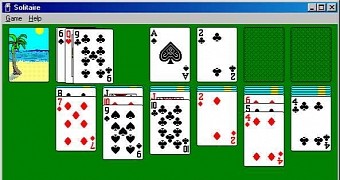Solitaire must be the most popular computer game in history, and although most of us played it to waste time at work, this isn’t obviously the main reason why Microsoft included it in its Windows operating system.
Microsoft Solitaire debuted in Windows in 1990 when the software giant rolled out version 3.0 of the operating system, and it was the first widely-popular digital version of the card game (although it actually existed since the 1700s, but in traditional form).
And as it turns out, Microsoft had one very clear goal in mind when bringing Solitaire in Windows: to teach Windows adopters how to use the mouse and drag and drop features. As weird as it may sound, at that point, the mouse was still an unexplored world for most computer users, mostly because the majority were used with the traditional command line.
So Solitaire was there to make the whole mouse thing a familiar experience, and judging from where the mouse is right now, Microsoft’s plan was kind of successful.
And Solitaire wasn’t the only Windows game whose purpose was to teach people how to use “modern” computer features.
The rest of the games
Minesweeper, another super-popular Windows game, debuted in Windows 3.1, this time with a slightly-different goal: to highlight how mouse clicks would work in a modern operating system. Minesweeper employed both the left and the right clicks, so those who played the games could get a point on what exactly these yet uncommon features of the mouse were supposed to do.
And it doesn’t stop here. Both Hearts and FreeCell had a secret mission when making their way to Windows. Hearts introduced networking capabilities, and Microsoft was trying to help users figure out how networking actually works in Windows, while FreeCell was more of a test to determine the compatibility between 32-bit apps and 16-bit systems.
So there you go, Solitaire, Minesweeper, Hearts, and FreeCell were all introduced in Windows with a completely different purpose, even though they became the most popular productivity killers.

 14 DAY TRIAL //
14 DAY TRIAL //